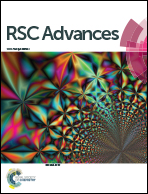A NIR-to-NIR upconversion luminescence system for security printing applications†
Abstract
A covert print-and-read system is demonstrated based on NIR-to-NIR upconversion luminescence. Inks activated with Yb3+/Tm3+ doped β-NaYF4 upconversion nanoparticles were used to print covert features on various substrates, including paper, epoxy resin, and circuit boards. The Yb3+/Tm3+ doping concentrations were optimized to maximize the brightness of 800 nm upconversion emission excited with 980 nm light, while simultaneously minimizing unwanted blue upconversion. Images printed with the NIR-optimized inks are invisible to the naked eye under ambient lighting or under 980 nm excitation. NIR-to-NIR images are easily captured, however, using an inexpensive, modified point-and-shoot CCD camera, even at modest excitation power densities (1.5 W cm−2). It is demonstrated that the latent images can also be read through select hard or soft coatings which are opaque to visible light, such as black inkjet print, or dyed epoxy resin, without significant attenuation of brightness. The ability to protect the printed images with durable, opaque coatings increases the tamper-resistance and the covertness of the system; removes the requirement that the print be invisible on the bare substrate; and blocks any visible emission that might be present, even under very high excitation power densities.


 Please wait while we load your content...
Please wait while we load your content...